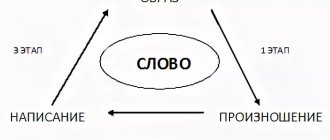Our brain is a complex mechanism that is responsible for performing various tasks. Essentially, it is a biological computer in which physiological and psychological processes, such as memory, occur. Most people confuse or interchange the concepts of “memory” and “memorization.” However, this is a misconception. Memorizing information is the imprinting of specific material; if we continue the parallel with the computer, then it is writing data to the hard drive. This article is devoted to this property of memory.
- Types of memorization
- The main conditions for successful memorization
- Some facts about memorization
Content
- Ways to remember information
- Types of memory by sensory modality
- Conditions for effective memorization
- What is the essence of our approach
Memory is the basis of intelligence, the key to successful learning and career growth.
Major leaders, successful entrepreneurs, famous scientists, artists, and generals mostly have a brilliant memory and, as a result, developed intelligence. Like any ability, a good memory can be given to a person by nature. Children who do well in school without much effort are the owners of precisely such natural abilities.
But it is wrong to think that if you are not lucky enough to have a tenacious memory, then nothing can be done about it. The skill of quickly and firmly memorizing any information can be developed at any age using special techniques and regular active training. Conversely, if natural memory is not developed - like any other ability - it loses its potential and ultimately fades away.
Read our article about memory training methods.
Motor memory
Motor memory retains everything related to motor activity. It’s as if the arms and legs themselves “remember” what to do.
Motor memory helps us remember movements and then reproduce them. Thanks to her, we learn dances, work with instruments, ride a bike, etc.
The development of motor memory is promoted not only by the refinement of movements, accuracy, and dexterity. Without it, it is simply impossible to achieve success in any business, no matter what we undertake. It underlies the skills of walking, riding, writing, and all work and practical skills. If we did not have this memory, we would be forced to learn to repeat this or that action. The more familiar the conditions, the more accurate and precise the movements, the better the result.
Usually one type of memory predominates, but there are also mixed and combined ones. Thus, motor-auditory memory and visual-motor-auditory memory belong to combined types of memory.
Ways to remember information
We have already talked in detail about the types of memory, so now let’s figure out what “muscles” it consists of and how it works.
Intentional and unintentional remembering
In other words - voluntary or involuntary memory. The only difference is that voluntary memory obeys our will when we force ourselves to remember something, and involuntary memory records information automatically, and you do not have to make any effort.
The work of involuntary memory can be seen especially clearly in childhood memories - we often remember with all clarity some minor episodes, but we do not remember really important events.
In order for your memory to work smoothly, it is important to understand exactly how all memorization processes occur, as well as master special techniques and train it correctly.
Mechanical, analytical and mnemonic memorization
Let's look at the three main ways to remember information.
Mechanical
This is memorization through repeated repetition. The same cramming that is still widely used in school and which we automatically use in further education: at a university or in courses.
Despite its prevalence, this method is not the most effective, since it takes an unreasonably long time and does not provide truly lasting memorization.
It was thanks to cramming that our school experience left us with a legacy of a negative attitude towards any kind of learning. Remember, for example, how difficult it was to learn foreign words, how difficult it was to bring them into conversation and how quickly they were erased from memory without practice. It's no surprise that the idea of learning English as an adult is, to put it mildly, unenthusiastic. But as soon as we replace rote learning with a more effective method of memorization - mnemonics - and we begin to like the process itself.
Mnemonic
This is memorization based on information already in the head, mainly figurative.
To remember a new term using mnemonics, you need to associate it with a bright, memorable picture that is associated by sound. That is, through visualization, to mediate the name of the term with its content.
For example, to learn what a synonym is and never confuse it with antonyms or homonyms, imagine that SI
nonims are girlfriends who
each other
on chairs and hold hands. Words that are similar in meaning (are friends), but different in sound.
ANTONYMS
connect with the image
of ANTO
from the children's song, who always resists the offer to go dig potatoes. This way we will remember that these are words with opposite meanings.
And OMONims
- these are guys from
the riot police
who look the same in camouflage, although they are different people. Words that sound the same, but have different meanings.
Unlike cramming, mnemonic memorization increases the volume and speed of memorization by orders of magnitude, that is, tens and even hundreds of times.
Analytical
This is memorization, when you need to delve into the content of the material and analyze it.
The method implies that you need to draw up a plan, identify micro-topics, understand the interconnection of logical blocks - this is the work of the intellect during analytical memorization. This is how we usually taught the theoretical part of the paragraphs.
Emotional memory
Emotional memory contains all memories of experienced emotions and feelings. A feature of emotional memory is its brightness even after many years after the emotional outburst received. Usually, supported by an emotional impulse, it stores information for a long time and firmly. This may be due to the fact that, under the influence of strong emotions, adrenal hormones are included in the memorization mechanism, which are not involved in normal memorization.
Sometimes primary emotions are replaced by secondary ones, sometimes opposite ones, and then we overestimate our attitude towards events that once took place.
The development of the emotional type of memory helps to increase a person’s intellectual potential. Both success and comfortable emotional state in the family and society depend on the development of emotional memory. Works of art, wildlife, and fiction stimulate the development of imaginative thinking, which also contributes to the development of emotional memory.
Functions of emotional memory:
- Accumulation and reproduction of emotional experience associated with the event that caused the emotion.
- Formation of emotional intelligence.
- Influence on the development of personality and its creative abilities.
Through memory for emotional states, we make decisions about our next steps, we have the opportunity to learn from our mistakes and repeat successful experiences. The functions of emotional memory make its contribution to the formation of personality very significant.
Thanks to the emotional type of memory, we know how to suffer, rejoice, and sympathize. Once experienced feelings hold us back from something, encourage us to do something. Emotions are involved in the mechanism that motivates us to action. It is not thinking, but emotions that charge us with energy.
Types of memory by sensory modality
Depending on which channel is leading in the perception of information, memory is divided into auditory, visual, gustatory, olfactory and tactile
(memory in sensations).
For example, smelling the perfume your first teacher wore can unexpectedly revive a chain of childhood memories. This is the result of the work of olfactory memory. And if you remember the New Year when you eat tangerines, it means the taste has worked.
With rare exceptions, the visual channel is the leading one. But this does not mean that everything else can be abolished. They are good to use as auxiliary ones.
For example, in order to better remember hieroglyphs, you can not only assign similar images to them (mnemonics), but also “draw” features in the air with wide movements of the hand or even the legs and head. This way you use tactile memory - body memory.
Exercises for memory development
Schulte tables
The tables, developed by German psychiatrist Walter Schulte, contain randomly placed objects. Exercises can improve not only visual memory, but also peripheral vision, which is important for speed reading. Tables can have different sizes - you can start with 2x2. Look at the table for 5 minutes and then try to reproduce the contents of the cells.
You can train on a special website or mobile application.
Aivazovsky method
The artist used this method in order to be more attentive to the world around him and reproduce significant details in his paintings. The technique is simple: select any landscape, interior, look at it for 5 minutes and reproduce it on paper. Gradually reduce the time period.
Rewind
Every day before going to bed, scroll through your day and remember not only the sequence of events, but also reproduce the feelings that you had at one time or another. Try to remember the dialogues accurately or say new information.
Another way to rewind is to count backwards, choosing only even or odd numbers. Or name numbers that are divisible by three.
Building associations
Write any words randomly and divide them into three columns. Your task is to remember them for a minute and then write them down on a blank sheet of paper. The task is not to memorize, but to build associations and relationships between words that at first glance may seem unrelated.
Memorization while multitasking
In fact, a person cannot perform several tasks at the same time, but he is able to quickly switch attention from one subject to another. Choose a poem to learn and ask your friends to ask you a variety of questions and challenges for two minutes. For example, describe a child’s favorite sweet or solve an example. This training, thanks to constant resistance, will increase your attention aimed at memorizing the poem. You may not succeed the first time, but over time you will remember more and more.
Conditions for effective memorization
To manage your memorization process and achieve good results, apply the following principles:
- do not let this process take its course, use conscious memorization;
- strengthen your memory with special exercises - we have compiled a selection of them in a separate article;
- give up cramming in favor of mnemonics coupled with analytical memorization. For example, first learn all the terms, formulas and definitions of a paragraph through images, and then analyze the text, make a mind map based on it and memorize it again using mnemonics.
- remember that the state of memory is closely related to our general physical condition: a balanced diet, adequate sleep, the absence of stress and bad habits increases the ability to remember even without the use of special techniques.
How to develop memory
In many ways, memory development is associated with training attention and improving the ability to concentrate. These processes are interconnected, since the more a person keeps his attention on something, the more he is able to remember.
The effectiveness of memorization depends on:
- motivation, desire to remember this information
- significance, which is directly related to practicality
- emotional perception
- depth of immersion in material
- number of repetitions
- psychophysical state
- combining different memorization techniques
What is the essence of our approach
Our center has been developing accelerated learning technologies for 11 years. During this time, our methodologists have created more than 50 courses in a variety of areas: from language to personal development programs.
But at the heart of each of them is the development of memory skills. Any of the courses, be it English or effective reading, pumps up your memory, teaches you how to use mnemonics and work with information. Graduates of our courses note pleasant side effects in the form of improved memory and attention. Being able to remember any information quickly and for a long time, you will learn with pleasure and results.
This is our approach, which we recommend that everyone follow: when starting any new project, always start with memory development. Good luck!
Long-term, short-term and working memory
Based on the time it takes to store information, we distinguish between instant, short-term, operational and long-term memory. Short-term memory is capable of storing information for a very short time, about 40 seconds, and its volume is small, it is 7 plus or minus 2 units of information. This volume can be increased by combining information into blocks.
Most of the information from short-term memory is then erased, and less goes into the so-called working memory. This is facilitated by some factors, such as the emotionality of the presentation, brightness, surprise, unusualness of the material, repeated repetition, and importance for a particular person. Information is stored in RAM for up to a day (maximum), then the less important part is erased, and the more important part goes into long-term memory. Here, information is stored throughout life, and for this the body uses special nucleic acids and memory proteins.
Interestingly, in the slow-wave sleep phase, logical information processing occurs, and in the fast sleep phase, selected information is transferred to long-term memory. You can read more about these processes and the development of long-term memory, as well as the development of short-term memory, in our blog.











